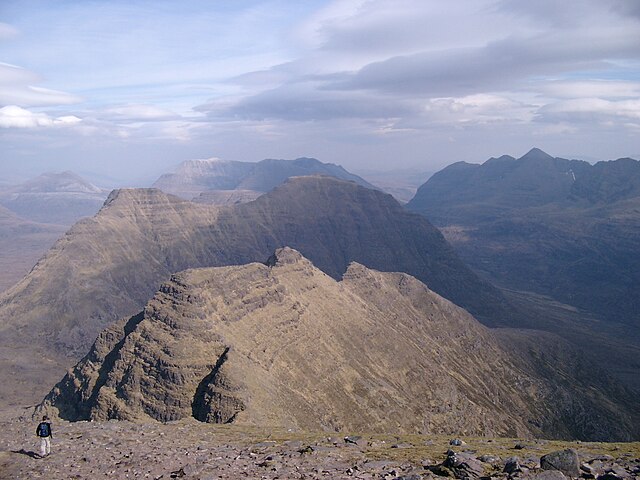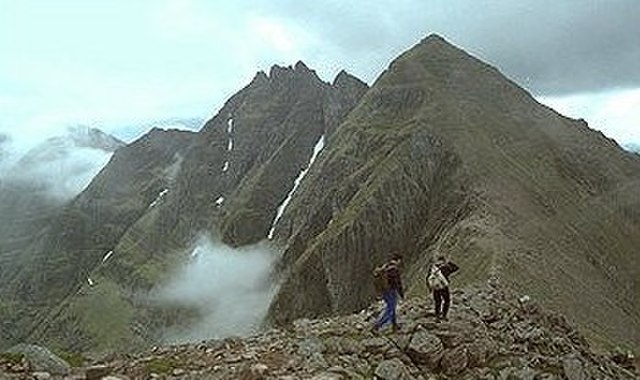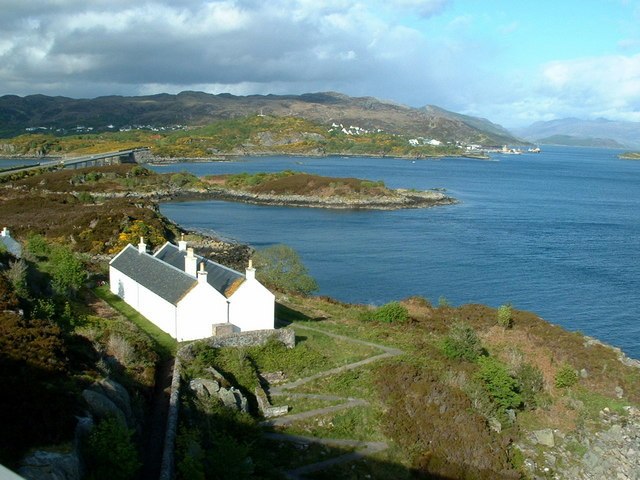Ross is a region of Scotland. One of the provinces of Scotland from the 9th century, it gave its name to a later earldom and to the counties of Ross-shire and, later, Ross and Cromarty. The name Ross allegedly derives from a Gaelic word meaning "headland", perhaps a reference to the Black Isle. Another possible origin is the West Norse word for Orkney – Hrossey – meaning horse island; the area once belonged to the Norwegian earldom of Orkney. Ross is a historical comital region, perhaps predating the Mormaerdom of Ross. It is also a region used by the Kirk, with the Presbytery of Ross being part of the Synod of Ross, Sutherland and Caithness.
Liathach seen from Beinn Eighe. With the Munro “Top“ of Stuc a' Choire Dhuibh Bhig (915 metres) in the foreground and the two Munro summits in the background.
View east from Sgurr Mhòr over the "Horns" of Beinn Alligin
Slioch seen from the shores of Loch Maree
Ross-shire is a historic county in the Scottish Highlands. The county borders Sutherland to the north and Inverness-shire to the south, as well as having a complex border with Cromartyshire – a county consisting of numerous enclaves or exclaves scattered throughout Ross-shire's territory. Ross-shire includes most of Ross along with Lewis in the Outer Hebrides. Dingwall is the traditional county town. The area of Ross-shire is based on that of the historic province of Ross, but with the exclusion of the many enclaves that form Cromartyshire.
Sgurr Fiona and the Corrag Bhuidhe pinnacles on An Teallach in Wester Ross
Eilean Bàn from the Skye Bridge, looking towards Kyle of Lochalsh
Shag birds on Longa Island
The Isle of Ewe







